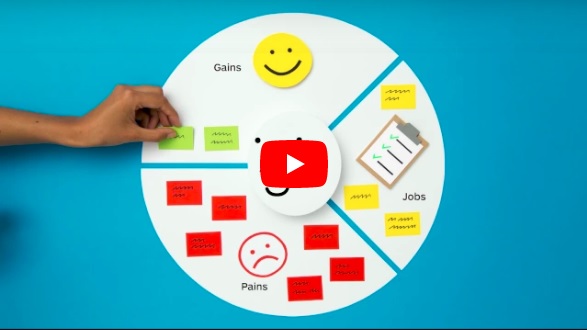Find the Value Proposition

There are many of us hearing about people defining a business they think will be successful and taking off to develop a product or service to produce for that business. Then these people talk about all the starts and stops they had until they started selling it and made millions. There’s a program on National Public Radio, called “How I Built It” that relates these success stories. For some time there have been various people who’ve tried to describe how to find the value proposition that will be successful in a chosen market. In this article I’ll outline the way you can go about this process.
First, define the value proposition, and then decide which delivery system will get the product to market and how to communicate to the potential customers that the value proposition is available and they will want to purchase it. This process will work whether you’re starting a new business or you’re working for an existing business and considering adding to the product line. This is great because versatility is always a key to success.
A value proposition must be actionable, specific, and have precise answers to these questions: 1) Who are the intended customers? 2) What is the proposition’s time horizon? 3) What do you want the intended customer to do? 4) What competing alternative(s) do they have? 5) What resulting experiences will they derive from the product or service vs. the alternative(s) if they do as you propose? Remember that one important resulting experience is the price. Many winning value propositions are trade-offs and some experiences are only equal to or inferior.
If you or your organization has a value proposition and it is a specific statement recognized by everyone (not just a feeling), that means, of course, everyone knows what it is, then it needs to be written down and published and agreed to by those who need to know and understood by everyone! It represents a disciplined decision to pursue one of numerous options, not a vague global set of promises. If it’s a large organization, every function and department, not merely marketing or planning, knows what it is, understands it, and uses it to guide everyday operational decision-making.
Now that your organization as a whole understands the value proposition, then the experience the customer will derive from the delivery of the proposition must be communicated. Ensure the targeted customers realize and fully appreciate the benefits they will derive from the value delivery proposition. Finally, the customer must be given reasons to believe they will actually derive the resulting experiences. No matter how well you do this you must directly communicate and check back that it’s understood to actually win customer preference. The customer has to be assured that all entities in the supply chain are on board with the delivery proposition and their cost has been considered in the total cost. After you complete the design of this new delivery proposition there are still some questions that have to be answered before you’re ready to widely market this value proposition.
If delivered as designed do you believe intended customers would conclude that the value proposition is superior to their competing alternatives? Of course, you need to determine the amount of revenue increase or if it’s brand new how much total revenue is available for this specific proposition. Then ask yourself if you believe the company can and will build the capabilities needed to implement this value delivery proposition.
Afterward, you must believe you can build the capabilities and know what would be the total cost you would incur. This would include on-going operations costs plus those of building new capabilities and the cost of capital. How much profit would the business value delivery system generate, ignoring other businesses or later timeframes? What, if any, are the impacts on other businesses that this product or service would have?
Additionally, to what extent would this Value Delivery System reduce/increase profitability of other businesses? What would the impact be on later timeframes? Does it facilitate a longer-term more profitable Value Delivery System, or compromise later ones? What discontinuities may impact its success and sustainability? What changes in the environment could change the outcome of this Value Delivery System? How does this Value Delivery System compare to the other options? In net: Is this a good Value Delivery System and do you believe that in the long term it will generate more wealth for the firm than not implementing it?
Well, that’s it. You’ve now discovered a new value proposition for which you and, everyone that needs to have a full understanding of the proposition, understand the method of communication and the total cost including the delivery system. This puts you in a position to deliver this new offering to your customers as soon as all investments for all capabilities are completed. Now go make your millions!
Your path to business success.

